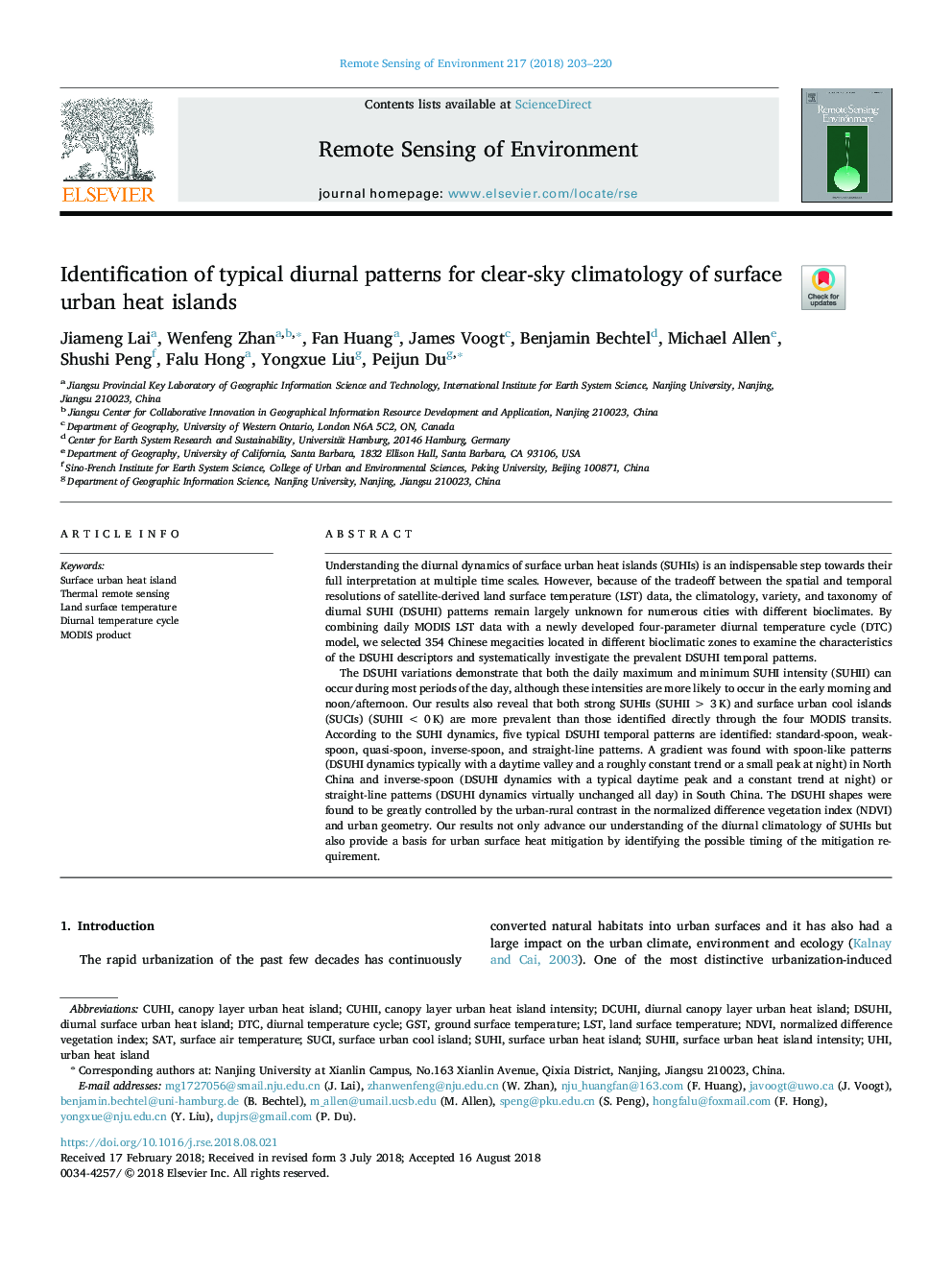| Article ID | Journal | Published Year | Pages | File Type |
|---|---|---|---|---|
| 10113964 | Remote Sensing of Environment | 2018 | 18 Pages |
Abstract
The DSUHI variations demonstrate that both the daily maximum and minimum SUHI intensity (SUHII) can occur during most periods of the day, although these intensities are more likely to occur in the early morning and noon/afternoon. Our results also reveal that both strong SUHIs (SUHIIâ¯>â¯3â¯K) and surface urban cool islands (SUCIs) (SUHIIâ¯<â¯0â¯K) are more prevalent than those identified directly through the four MODIS transits. According to the SUHI dynamics, five typical DSUHI temporal patterns are identified: standard-spoon, weak-spoon, quasi-spoon, inverse-spoon, and straight-line patterns. A gradient was found with spoon-like patterns (DSUHI dynamics typically with a daytime valley and a roughly constant trend or a small peak at night) in North China and inverse-spoon (DSUHI dynamics with a typical daytime peak and a constant trend at night) or straight-line patterns (DSUHI dynamics virtually unchanged all day) in South China. The DSUHI shapes were found to be greatly controlled by the urban-rural contrast in the normalized difference vegetation index (NDVI) and urban geometry. Our results not only advance our understanding of the diurnal climatology of SUHIs but also provide a basis for urban surface heat mitigation by identifying the possible timing of the mitigation requirement.
Keywords
Related Topics
Physical Sciences and Engineering
Earth and Planetary Sciences
Computers in Earth Sciences
Authors
Jiameng Lai, Wenfeng Zhan, Fan Huang, James Voogt, Benjamin Bechtel, Michael Allen, Shushi Peng, Falu Hong, Yongxue Liu, Peijun Du,
